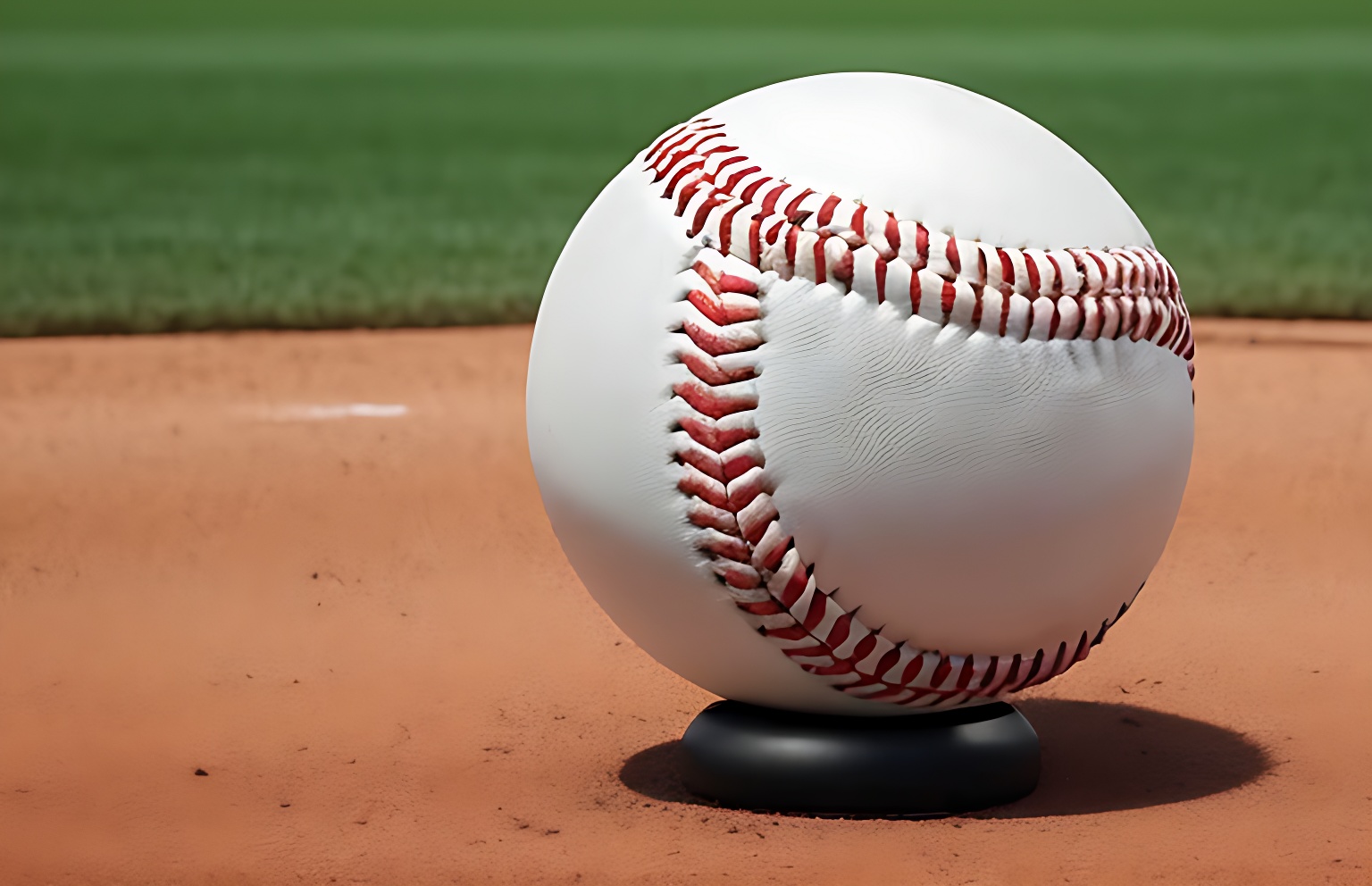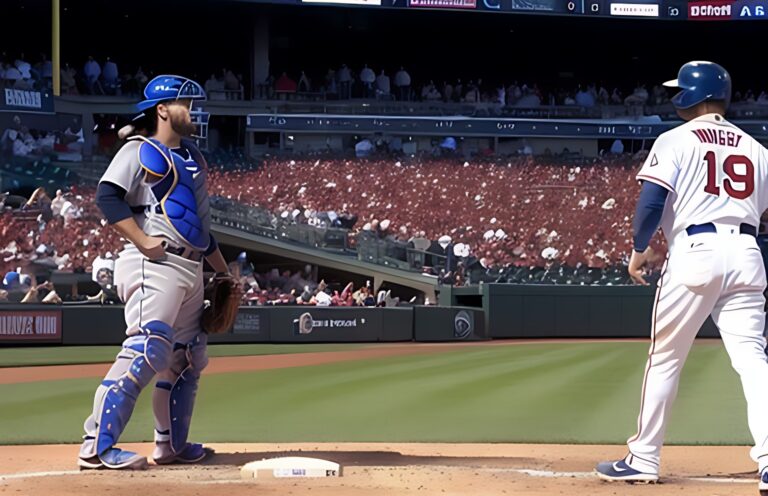How Much Does a Baseball Weigh?
Have you ever wondered about the weight of a baseball? Whether you’re a passionate player or simply curious about the intricacies of America’s favorite pastime, understanding the weight of baseball is an essential piece of knowledge. In this article, we delve into the intriguing world of baseball physics to uncover the answer to the age-old question: How much does a baseball weigh?
A standard baseball typically weighs between 5 and 5.25 ounces. This seemingly small range holds great significance in maintaining consistency across the sport. Behind its familiar appearance lies a carefully crafted design, featuring a core made of cork and rubber at the center. Surrounding the core, the baseball is skillfully wound with yarn, ensuring a compact and durable structure.
Join us on this captivating journey as we explore the science and craftsmanship behind the weight of a baseball. Discover the factors that contribute to its weight and the meticulous process that goes into creating a baseball that can withstand the fast-paced throws and powerful swings of the game. Get ready to unlock the secrets of a baseball’s weight and deepen your appreciation for this beloved sport.
Evolution of Baseball Weight
Prepare to be whisked away on a captivating journey through the evolution of baseball weight. From the featherlight flingers of yesteryear to the perfectly weighted warriors of today, every step in this weighty evolution has left an indelible mark on the game we adore.
- Delve into the whimsical beginnings of baseball’s weight journey
- Discover how feather-filled baseballs took flight in the early days
- Uncover the playful adaptations that brought joy to the game
- Strap in for a wild ride through the weight rollercoaster of baseball’s past
- Witness the bold experiments that made baseballs as heavy as hammers
- Explore the era of lightweight wonders, where nimble projectiles ruled the diamond
- Follow the quest for consistency as baseball’s weight finds its true calling
- Unveil the challenges of balancing tradition with the ever-changing demands of the game
- Peek behind the curtain at the magical moment when standardized weight transformed the sport
Let’s wind back the clock to the early days of baseball, where weight was as light as a feather. Discover the whimsical origins of baseball’s weight, where enthusiastic players crafted balls filled with feathers or soft materials. In those carefree times, weight played a supporting role, taking a backseat to the sheer joy and camaraderie the game brought.
Hold on tight as we journey through the wild swings of baseball’s weight pendulum. Brace yourself for the era of hefty hammers, when pioneering players and inventors swung for the fences with mammoth baseballs. Experience the surprising consequences and strategic challenges these weighty behemoths brought to the game.
But wait, the pendulum doesn’t stop there! Witness the emergence of lightweight wonders, where nimble projectiles danced through the air with unparalleled grace. Experience the exhilaration of faster pitches, agile fielding, and the strategic innovations sparked by these featherweight marvels.
As the game advanced, a need for consistency arose. Join us as we unravel the quest for the perfect balance between tradition and innovation. Discover the challenges faced by baseball’s custodians as they sought to standardize weight, navigating the intricate web of craftsmanship, technology, and respect for the game’s legacy.
Today, standardized baseball weight stands as a testament to the dedication of those who strove to ensure fairness and uniformity in the game. Every swing, every pitch, and every play is influenced by the perfectly weighted orbs that grace the diamond.
Prepare to be captivated as we unveil the captivating evolution of baseball weight. From the featherlight flingers that started it all to the perfectly weighted warriors we see today, this journey will deepen your appreciation for the role that weight plays in the grand tapestry of our beloved game.
Learn Also: Best Baseball Underwear
Variations in Baseball Weight
Embark on a thrilling expedition as we unravel the mysteries of baseball weight variations. From the hidden factors that affect the weight to the game-changing consequences on the field, this exploration will shed light on the weighty secrets that shape the game we love.
Prepare to enter the realm of secrets and uncover the hidden factors that influence the weight of a baseball. Journey with us as we explore the impact of humidity and atmospheric conditions on the weight of these spherical projectiles.
Discover how moisture in the air and other environmental elements can tip the scales, quite literally, in the game of baseball. And hold your breath as we reveal the surprising role of temperature in the weight equation, shedding light on the delicate dance between heat and weight.
Brace yourself for a game-changing revelation as we delve into the consequences of weight variations in baseball. Uncover the powerful effects that different weights can have on pitching, hitting, and fielding strategies. Experience the thrill of understanding how a fraction of an ounce can alter the dynamics of the game. Explore the tactical advantages and challenges that arise from weight fluctuations, as players and teams adapt to the ever-changing weighty landscape.
Step into the shoes of the players as we explore the world of weight selection and personal preferences. Gain a glimpse into the minds of athletes as they navigate the weight selection process, searching for the perfect balance between power and control.
Explore the individual quirks, superstitions, and rituals surrounding baseball weight, as players find their rhythm and connection with the game. Unlock the secrets of how these skilled professionals harness the power of weight to optimize their performance and make their mark on the diamond.
Weighing Techniques and Equipment
Prepare to enter the realm of precision measurement on the diamond as we unveil the weighing techniques and equipment that ensure accuracy and fairness in the world of baseball.
Take a step back in time and immerse yourself in the world of traditional weighing methods. Embark on a fascinating journey through the evolution of tools and techniques used to measure baseball weight. Discover the ingenuity of early baseball enthusiasts as they devised homemade contraptions to determine the weight of the ball. Explore the enduring techniques that have stood the test of time, ensuring accurate and consistent weight measurement throughout the history of the game.
Fast forward to the present day and witness the marvels of modern weighing equipment. Step into the realm of cutting-edge technology used in professional baseball to achieve precise weight measurement. Marvel at the sophisticated tools, such as digital scales and sensors, that enable accuracy and efficiency in the weighing process. Explore the integration of technology into the quest for precise weight measurement, revolutionizing the way we understand and appreciate the game.
Delve into the vital processes of calibration and standardization that ensure the integrity of weight measurement in baseball. Gain insights into the meticulous steps taken to calibrate weighing equipment, guaranteeing accurate and consistent results.
Understand the importance of standardization in upholding fairness and uniformity across the game. Explore the organizations and guidelines responsible for maintaining the integrity of weight measurement, ensuring that every player steps onto the field with a ball of proper weight.
How much does a Baseball weigh in the Dead Ball era?
During the Dead Ball era of baseball, which spanned from the 1900s to the 1910s, the weight of baseballs varied compared to the standard weight used in modern baseball. In the early years of the Dead Ball era, baseballs were typically heavier than they are today. While there was no specific weight mandated by the rules, they were commonly around 5 to 5.5 ounces (142 to 156 grams).
The heavier weight of the baseballs during this era was partly due to the manufacturing process and the materials used. Baseballs were often made with a rubber core, tightly wrapped in yarn, and covered with horsehide or cowhide leather. This construction resulted in a denser and more substantial ball compared to contemporary baseballs.
The increased weight of the baseballs had a significant impact on the style of play during the Dead Ball era. The heavier balls were harder to hit with power, leading to a more strategic and finesse-based style of play. Pitchers had an advantage as they could manipulate the ball’s movement more effectively, and the emphasis was placed on pitching, defense, and small-ball tactics.
It’s important to note that while the average weight of baseballs during the Dead Ball era was around 5 to 5.5 ounces, there could be some variation depending on the manufacturer and specific game circumstances. The exact weight of baseballs during this era may have slightly differed from game to game.
How are Baseballs made?
Baseballs are typically made using a multi-step process that involves several materials and precise craftsmanship. The core of a baseball is composed of a small sphere made of rubber or cork. The core is then surrounded by several layers of tightly wound yarn, usually made of wool or a combination of wool and polyester. These layers provide the ball’s shape and durability.
The yarn-wrapped core is then covered with two pieces of leather, which are stitched together using a special type of thread. The leather used for baseballs is traditionally cowhide, although synthetic materials may also be used. The stitching process involves 108 stitches, forming raised seams that allow pitchers to grip the ball better and generate movement when thrown.
To ensure consistency, modern baseball manufacturing involves automated processes, although some elements are still done by hand. The leather pieces are cut into the appropriate shape, and the stitching is done by machines or skilled craftsmen. The final step involves quality control inspections to check for any defects or irregularities.
Conclusion
In conclusion, the weight of a baseball is typically around 5 ounces or approximately 0.14 kilograms. This weight is standardized for professional baseball leagues such as Major League Baseball (MLB) and is used in various levels of the sport. The weight of a baseball plays a crucial role in determining its flight and trajectory when thrown, pitched, or hit. It is designed to be easily handled and manipulated by players, allowing for accurate throws, pitches, and hits. The consistent weight of a baseball contributes to the fairness and integrity of the game, ensuring a level playing field for all participants.







